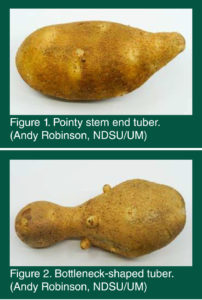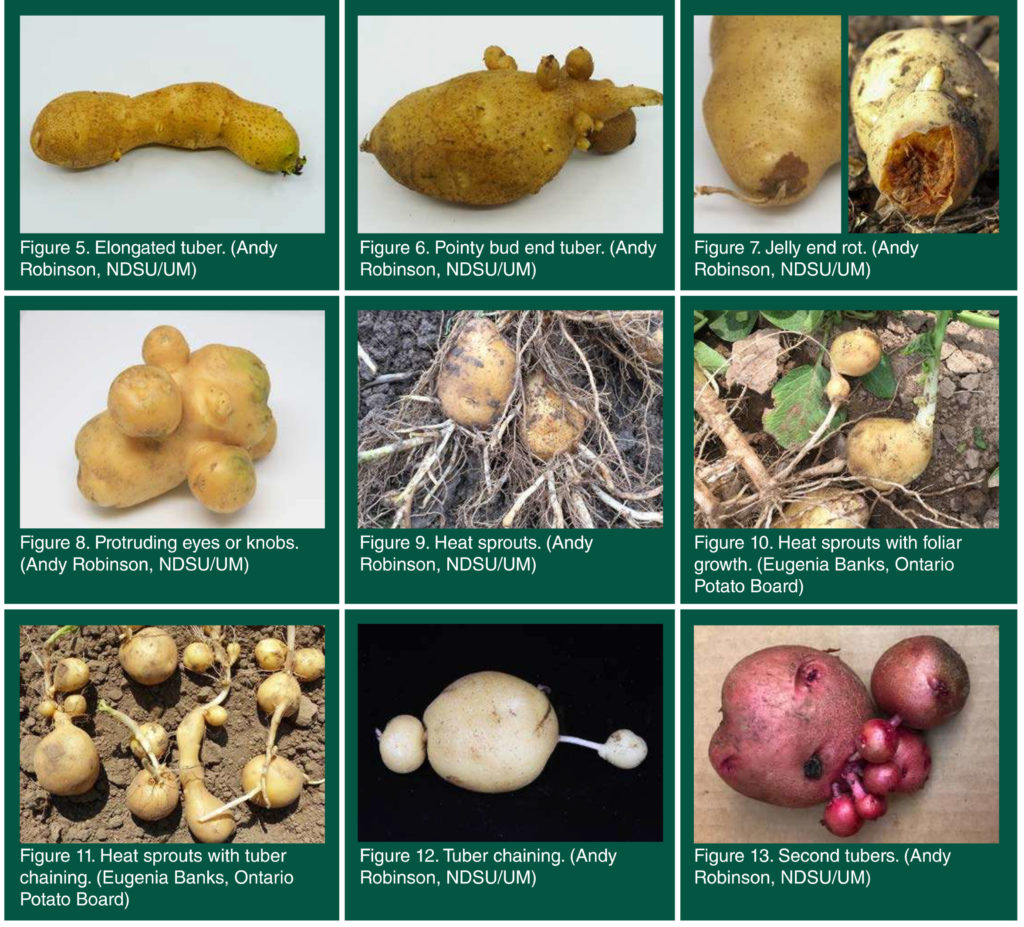Secondary growth often manifests as heat sprouts, tuber chaining and malformations
By Andy Robinson, associate professor and extension potato agronomist, North Dakota State University/University of Minnesota, and Eugenia Banks, potato specialist, Ontario Potato Board
Reprinted with permission from the North Dakota State University Extension
 Potato tubers are the result of plant genetics and the environmental conditions in which they are grown.
Potato tubers are the result of plant genetics and the environmental conditions in which they are grown.
Potato varieties are selected carefully for tubers that have desirable appearance to maximize sales and reduce waste.
However, some years can cause more environmental stress than others, resulting in tuber secondary growth. Secondary growth often manifests as heat sprouts, tuber chaining and tuber malformations.
This physiological disorder decreases yield and quality of the tubers in the field. The most common condition leading to secondary growth is heat stress, specifically soil temperatures.
Wisconsin’s long dry spell and heat in late July through August of this past year caused some second growth problems on certain varieties.
Soil temperature as low as 75 degrees Fahrenheit can stimulate this disorder, while soil temperature held at 82 degrees for a month or 90 degrees for one week has resulted in consistent and significant second growth of tubers.
The development of second growth can also be attributed to other conditions that interrupt or temporally halt growth, such as moisture stress or nutrient imbalance.
A combination of stresses, such as heat and moisture, will exacerbate plant stress and cause more pronounced second growth.
Click here to read the full article.



